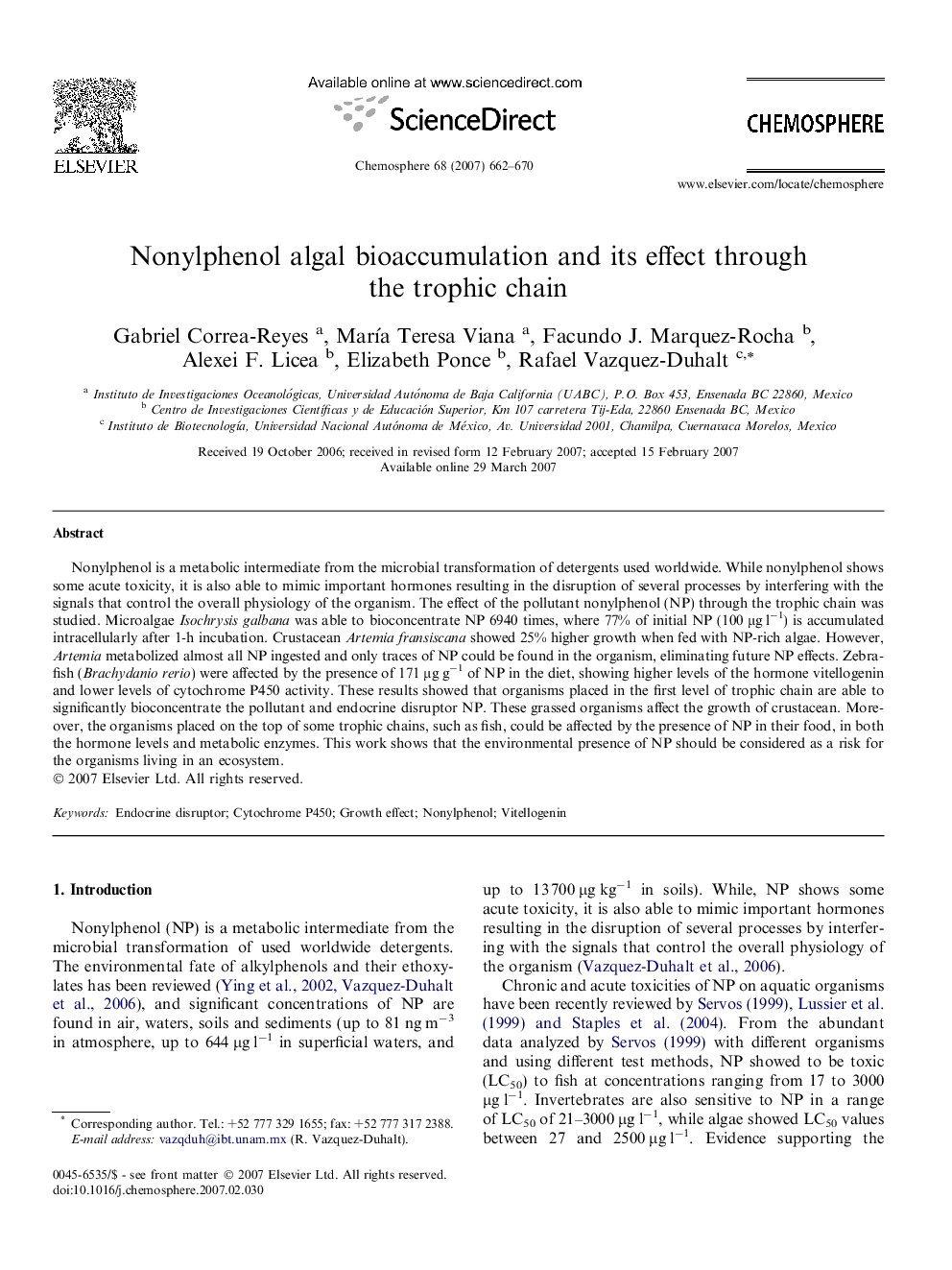| Article ID | Journal | Published Year | Pages | File Type |
|---|---|---|---|---|
| 4415016 | Chemosphere | 2007 | 9 Pages |
Nonylphenol is a metabolic intermediate from the microbial transformation of detergents used worldwide. While nonylphenol shows some acute toxicity, it is also able to mimic important hormones resulting in the disruption of several processes by interfering with the signals that control the overall physiology of the organism. The effect of the pollutant nonylphenol (NP) through the trophic chain was studied. Microalgae Isochrysis galbana was able to bioconcentrate NP 6940 times, where 77% of initial NP (100 μg l−1) is accumulated intracellularly after 1-h incubation. Crustacean Artemia fransiscana showed 25% higher growth when fed with NP-rich algae. However, Artemia metabolized almost all NP ingested and only traces of NP could be found in the organism, eliminating future NP effects. Zebrafish (Brachydanio rerio) were affected by the presence of 171 μg g−1 of NP in the diet, showing higher levels of the hormone vitellogenin and lower levels of cytochrome P450 activity. These results showed that organisms placed in the first level of trophic chain are able to significantly bioconcentrate the pollutant and endocrine disruptor NP. These grassed organisms affect the growth of crustacean. Moreover, the organisms placed on the top of some trophic chains, such as fish, could be affected by the presence of NP in their food, in both the hormone levels and metabolic enzymes. This work shows that the environmental presence of NP should be considered as a risk for the organisms living in an ecosystem.
